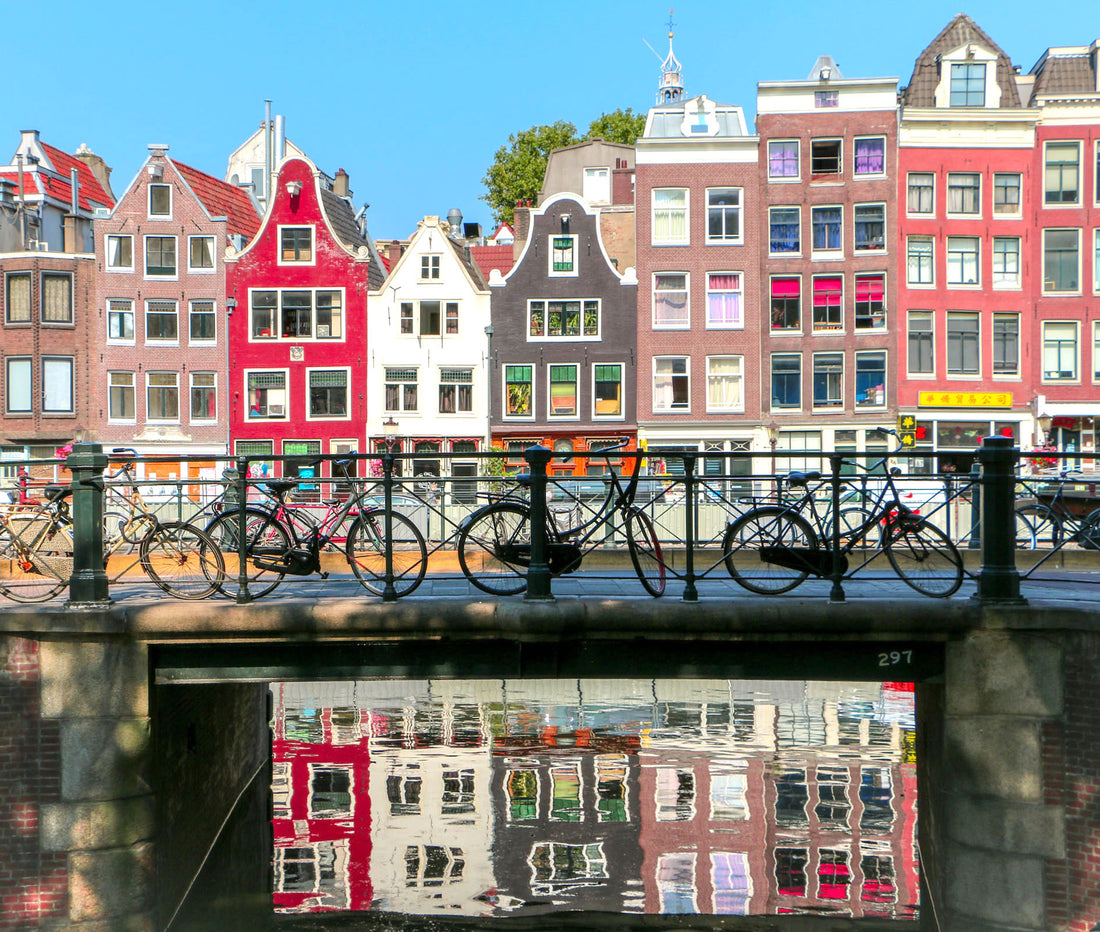What Is the Address Format of The Netherlands?
Last Updated: • Published • by orryanIf you're not familiar with Dutch as a language, the spellings in Dutch addresses may throw you off a little bit. But worry not—the address format of The Netherlands itself is actually pretty straightforward and not difficult to get familiar with!

Featured article photo: Amsterdam in The Netherlands, by Gaurav Jain (Unsplash License)
Address Format of The Netherlands 🇳🇱
[Postal Code][City or Town]
Netherlands
That's it! Simple, right? Here is an example of a dummy Dutch address using the format above:
3456 AB Amsterdam
Netherlands
Postal Code in The Netherlands
The only thing that may seem a little unique in Dutch addresses is its postal code format.
The Netherlands uses a 4-digit + 2-alphabet character postal code format. For instance: 1022 LC, 3062 PA, 5126 ND, and so on.
What About State or Province?
There are no "states" in the Netherlands, only provinces. There are 12 provinces in The Netherlands, but you may have noticed that there is no mention of a state or a province in the address format above. That's because it's not necessary. As long as everything else is correctly mentioned, your letter or package should reach its intended recipient.
Street Endings in Dutch
If you're just trying to write out an address and send a letter/package, you really don't need to care about the meanings of street endings. Just write out the address in the format above and you're good to go!
The street endings explained below are more for fun fact purposes. Here are 9 common street endings in The Netherlands:
-
Straat
Straat means "street" in Dutch, and it's the most common street suffix. For example, Kerkstraat (Church Street) or Hoge Straat (High Street).
Now, because quite a number of cities and towns in The Netherlands are surrounded by water, there are street endings such as -gracht, -singel, and -dijk that signify addresses around water and canals. If you're not sure what a canal is, it's essentially an artificial "river" or a waterway for transportation and drainage purposes.

Aerial view of the Canals of Amsterdam by Andrés Barrios (CC BY-SA 4.0 License)
-
Gracht
Gracht translates to "canal" in English and is used for streets along the canals in cities like Amsterdam. For example, Prinsengracht (Prince's Canal).
-
Singel
Singel is a circular waterway or canal surrounding a city center. For example, Utrechtse Singel (Utrecht Singel).
-
Dijk
Dijk means "dike" or "embankment" in Dutch and is used for streets along levees or embankments. For example, Zeedijk (Seadyke).
Here are other non-water-related street endings in The Netherlands:
-
Laan
Laan translates to "avenue" in English, and it is often used for wider or more prominent streets. For example, Beethovenlaan (Beethoven Avenue).
-
Weg
Weg means "way" or "road" in Dutch and is often used for roads or paths. For example, Bosweg (Forest Road).
-
Steeg
Steeg is used for narrow lanes or alleys. For example, Bloemensteeg (Flower Alley).
-
Plein
"Plein" translates to "square" in English, and it is used for open spaces or squares in cities. For example, "Museumplein" (Museum Square).
-
Markt
"Markt" means "market" in Dutch and is used for streets or squares where markets are held. For example, "Grote Markt" (Big Market).
